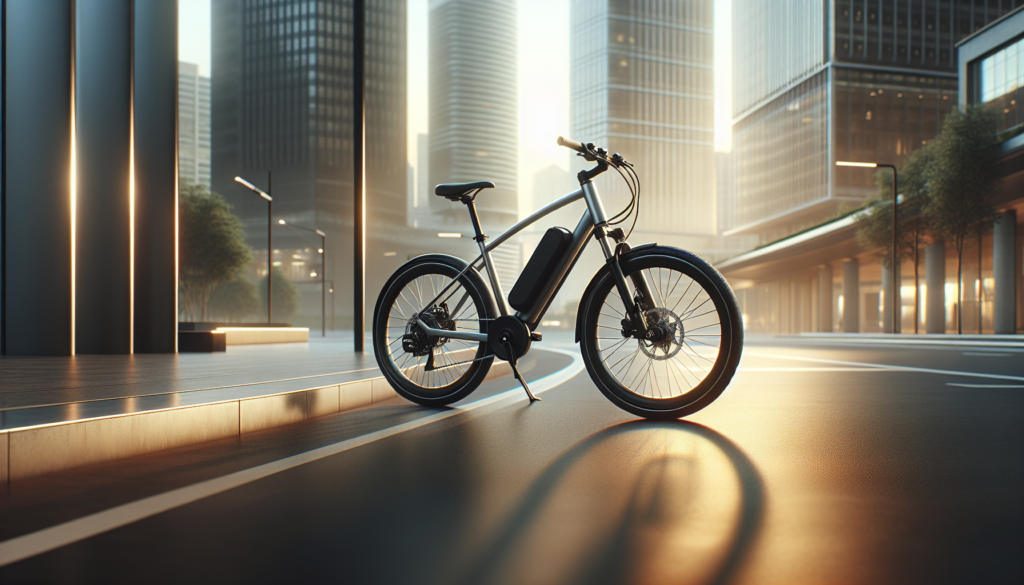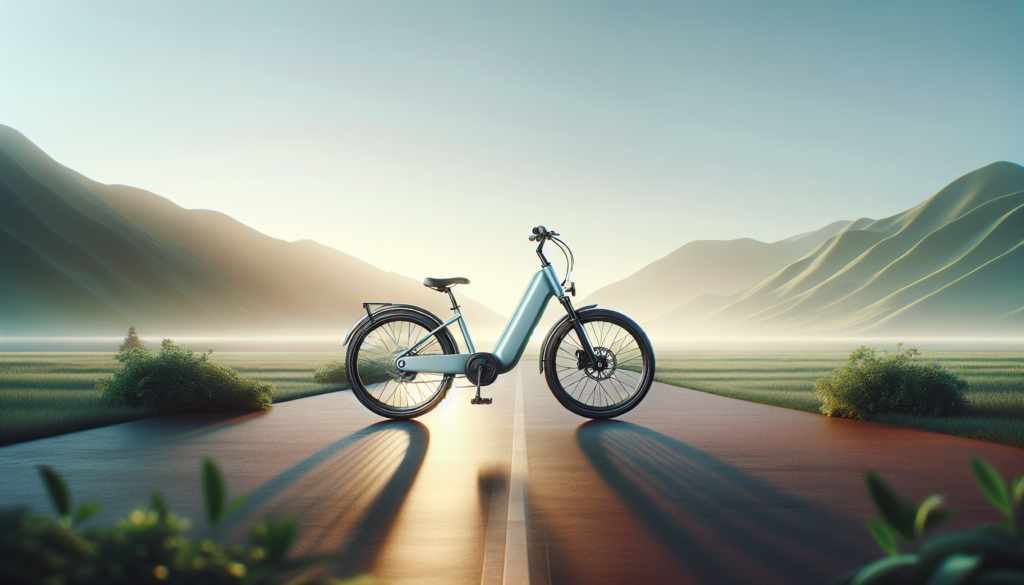
In the rapidly evolving world of electric bikes, the Xiaomi Ebike Himo Z20 presents an attractive package with its dual electrical assist modes and solid battery performance. However, as we dive into the specifications and features of this e-bike, we also need to consider its position alongside competitors like the ADO A20 Lite from EKO Life MY. Priced at RM 3,099, the Z20 boasts a 36V 10Ah Li-ion battery and a maximum load capacity of 100kg, but is it truly a good investment when an equally capable option, the ADO A20 Lite, is available at a slightly higher price point of RM 3,699? Let’s explore the details and determine which option provides better value for your money.
Overview of the Xiaomi Ebike Himo Z20
The Xiaomi Ebike Himo Z20 is a remarkable e-bike that offers users versatility with its dual electrical assist modes: Dynamic Sports Mode and Cool Mode. This feature allows riders to choose between a high-energy experience or a more relaxed ride, making it suitable for various terrains and user preferences. Boasting a 36V 10Ah Li-ion battery, the Z20 provides a reliable range of approximately 60 kilometers, ensuring that riders can enjoy extended outings without the hassle of frequent recharging.
Despite its robust capabilities, the e-bike is relatively lightweight at 21.6 kg and can accommodate a maximum load of 100 kg, making it practical and approachable for users of different sizes. Priced at RM 3,099, the Xiaomi Ebike Himo Z20 positions itself as a competitive option in the market, especially considering its chain system and mechanical disc brakes for enhanced control and safety. However, when directly compared to the ADO A20 Lite, the Xiaomi Ebike Himo Z20 might not be the best value for money. The ADO A20 Lite not only offers three electrical assist modes—providing more versatility—but it is also priced at a steeper RM 3,699.
While the A20 Lite comes with a slightly less potent 36V 9.6Ah battery, it matches the Z20 in range and weighs only 16 kg, appealing to those seeking a lightweight option. Factors such as the belt system and mechanical disc brakes contribute to its attraction. Given these comparisons, potential buyers might find that the ADO A20 Lite offers a more comprehensive package despite its higher price point, leading to the conclusion that the Xiaomi Ebike Himo Z20 may not be the wisest investment in the long run.
Key Features and Specifications
The Xiaomi Ebike Himo Z20 stands out in the e-bike market with its dual electrical assist modes: Dynamic Sports Mode and Cool Mode, allowing riders to choose between a thrilling ride or a more relaxed experience. Equipped with a 36V 10Ah Li-ion battery, it boasts a commendable range of about 60km, making it quite suitable for both urban commuting and leisurely rides. With a maximum load capacity of 100kg and a weight of 21.6kg, the Z20 feels sturdy yet manageable. Additionally, its chain system and mechanical disc brakes contribute to both reliability and performance, offering a total price point of RM 3,099, which seems reasonable for the features it provides.
In contrast, the ADO A20 Lite presents an even more appealing package. With three electrical assist modes, the A20 Lite enriches the riding experience with more versatility. It has a slightly smaller 36V 9.6Ah Li-ion battery also delivering a range of about 60km, while being significantly lighter at just 16kg. The ADO model uses a belt system and mechanical disc brakes, providing a different but effective riding experience. For RM 3,699, although it is pricier, the additional features and lighter build can offer a far better deal than the Xiaomi Ebike Himo Z20, making it a strong contender for those looking to invest in an e-bike.
Comparison with ADO A20 Lite
When comparing the Xiaomi Ebike Himo Z20 and the ADO A20 Lite, it’s essential to consider various factors like battery capacity, weight, assist modes, and price. The Xiaomi Ebike Himo Z20 comes with a 36V 10Ah Li-ion battery, standard performance with a remarkable range of approximately 60km, and a dual electrical assist mode, giving users flexibility between Dynamic Sports Mode and Cool Mode. However, it weighs 21.6 kg and has a higher price point at RM 3,099.
Meanwhile, the ADO A20 Lite offers a slightly lower battery capacity of 36V 9.6Ah but maintains a similar range of about 60km, proving efficiency isn’t compromised. This model also features three assist modes and is significantly lighter at 16 kg, which enhances portability and maneuverability for everyday use. Additionally, at RM 3,699, it comes with a belt system, which is often preferred for lower maintenance needs compared to the chain system of the Xiaomi Ebike Z20.
The ADO A20 Lite arguably presents a better value proposition with its combination of lighter weight, multiple assist modes, and overall design efficiency, making it particularly appealing to urban commuters. While the Xiaomi Ebike Himo Z20 has its strengths, especially in performance customization, the trade-offs in weight, price, and flexible assist options make the ADO A20 Lite a strong contender worthy of consideration for anyone interested in e-bikes. With these factors in mind, prospective buyers should weigh their priorities before making a decision.
Performance and Range Analysis

The Xiaomi Ebike Himo Z20 e-bike offers commendable performance features with its dual electrical assist modes—Dynamic Sports Mode and Cool Mode—allowing riders to adapt to their preferred riding style. Powered by a 36V 10Ah lithium-ion battery, it boasts a range of approximately 60 km, sufficient for daily commuting or leisurely rides. Weighing at 21.6 kg, this bike provides a sturdy feel, and with a maximum load capacity of 100 kg, it supports various rider weights. Its chain system and mechanical disc brakes contribute to a reliable and responsive ride, although the weight may be a consideration for some cyclists seeking portability.
However, when we compare it to the ADO A20 Lite, which features three electrical assist modes and weighs only 16 kg—making it more maneuverable—the differences in performance become more noticeable. The ADO A20 Lite, equipped with a 36V 9.6Ah lithium-ion battery also offers a similar 60 km range, but its lighter frame and advanced belt system enhance its efficiency and overall ride quality.
While the Xiaomi Ebike Himo Z20 comes at a lower price point of RM 3,099, the ADO A20 Lite’s higher investment of RM 3,699 could be justified by its superior features. Ultimately, if performance and ease of handling are priorities, the ADO A20 Lite could be considered the more advantageous choice for potential buyers.
Price Point: Is the Xiaomi Z20 a Good Investment?
When considering the price point of the Xiaomi Ebike Himo Z20, listed at RM 3,099, it offers a compelling set of features, but its value compared to the ADO A20 Lite raises questions for potential buyers. The Z20 comes equipped with a dual electrical assist mode, a robust 36V 10Ah Li-ion battery providing a commendable range of about 60km, and a sturdy chain system. While it boasts a decent performance and a max load capacity of 100kg, its weight of 21.6kg might deter some riders looking for a lightweight option.
However, when looking specifically at the price, the ADO A20 Lite emerges as a more appealing choice at RM 3,699, especially given its lighter build and efficient belt system, which could translate into a better riding experience for some users. Furthermore, ADO A20 Lite features three electrical assist modes, offering more flexibility for diverse riding conditions. It also matches the Z20 in terms of range but potentially offers smoother operation due to its mechanical disc brakes paired with a lower overall weight of 16kg.
Hence, while the Xiaomi Ebike Himo Z20 presents a solid investment for those who prioritize its specific features, potential buyers may find better value in the ADO A20 Lite, which aligns more closely with their performance and usability expectations on urban rides.
Pros and Cons of Xiaomi Himo Z20
The Xiaomi Ebike Himo Z20 offers several benefits that make it an attractive option for e-bike enthusiasts. Its dual electrical assist modes, Dynamic Sports Mode and Cool Mode, allow riders to choose their experience based on the terrain or personal preference. Furthermore, the 36V 10Ah Li-ion battery provides a commendable range of about 60km, making it suitable for longer rides. With a maximum load capacity of 100kg and a weight of 21.6kg, it stands as a reliable choice for many riders. The mechanical disc brakes ensure safety and control, while the competitive pricing at RM 3,099 makes it a solid consideration in the market. However, its chain system may require more maintenance compared to models with belt systems.
On the flip side, when we compare the Xiaomi Ebike Himo Z20 with the ADO A20 Lite, the latter seems to offer better value for money. Priced at RM 3,699, the ADO A20 Lite boasts three electric assist modes and a slightly lighter weight of 16kg, enhancing maneuverability and ease of transport. With a similar range of about 60km but a smaller 36V 9.6Ah battery, it supports the same max load of 100kg but provides superior convenience for maintenance due to its belt system. This comparison highlights that while the Himo Z20 has its merits, the ADO A20 Lite may represent a more compelling investment for those looking for versatility and lower maintenance costs.
User Feedback and Reviews
User feedback for the Xiaomi Ebike Himo Z20 has been generally positive, with many riders appreciating its robust features like the dual electrical assist modes and a decent range of up to 60km. Owners often highlight its comfortable design and manageable weight of 21.6kg, making it a practical choice for daily commuting. However, some users have noted that it falls short in terms of value when compared to other models in the same price range. While priced at RM 3,099, the Xiaomi Ebike Himo Z20 doesn’t offer as many advanced features as the ADO A20 Lite, which has garnered attention for its three electrical assist modes and lighter design at just 16kg.
Users looking for a well-rounded e-bike might find more value in the ADO A20 Lite, even with its slightly higher price tag of RM 3,699. Feedback points also include performance aspects such as the mechanical disc brakes and chain system of the Xiaomi Ebike Himo Z20, which may not feel as smooth or efficient compared to the ADO’s belt system. Riders who prioritize a lightweight and versatile ride often lean towards the ADO A20 Lite. Overall, while the Xiaomi Ebike Himo Z20 is a solid e-bike with its unique features, potential buyers seem to find that the better investment is the ADO A20 Lite, especially for those looking for enhanced performance without compromising on comfort.
Final Thoughts on Your E-Bike Choice
When considering your next e-bike investment, the Xiaomi Ebike Himo Z20 presents itself as a solid option with features like dual electrical assist modes, a 36V 10Ah battery, and a competitive price point of RM 3,099. Its design caters to a variety of riders, allowing for customization in how much assistance you need while cycling. However, the bike‘s weight of 21.6kg may be a concern for some users looking for a lighter option to transport.
Additionally, while it comes with a reliable mechanical disc braking system and can support a maximum load of 100kg, its overall specs may not be enough to sway potential buyers looking for more advanced features in today’s market. On the other hand, the ADO A20 Lite weighs only 16kg and offers three electrical assist modes, enhancing its usability for diverse cycling conditions. With a slightly lower battery capacity of 36V 9.6Ah, it still boasts a similar range of approximately 60km, providing great efficiency.
Priced at RM 3,699, it comes with a belt system and mechanical disc brakes, which are often considered superior in terms of maintenance and smoothness. Thus, while the Xiaomi Ebike Himo Z20 is a good e-bike, the ADO A20 Lite offers a more comprehensive package, potentially making it a better investment for riders looking for performance and convenience.
Final Thoughts: Xiaomi Himo Z20 vs. ADO A20 Lite

In conclusion, while the Xiaomi Ebike Himo Z20 presents a stylish design and acceptable performance with its dual electrical assist mode and decent range, it faces stiff competition from models like the ADO A20 Lite. The latter not only offers more versatility with its three electrical assist options but is also lighter, making it more practical for daily use. Considering that both bikes are priced competitively, it’s essential to weigh the pros and cons carefully before making a decision.
Ultimately, if you’re looking for a well-rounded e-bike that provides great value without compromising on features, the ADO A20 Lite emerges as the better investment. With a similar range and a lower price point, it delivers performance that suits varying riding conditions while remaining user-friendly. Therefore, if you’re aiming for an e-bike that offers more bang for your buck, the ADO A20 Lite is undoubtedly the smarter choice over the Xiaomi Ebike Himo Z20.

Nothing about the blog yet, please provide the summary.
Hi Ariel Chew, welcome to our blog and thank you for your comment! We apologize for the confusion. You can check out our latest article on ‘Empowering Cycle Communities with E-Boards: A Beginner’s Guide’. We also offer a wide range of quality bicycles, electric bikes, and e-scooters. If you have any questions or need assistance, please feel free to reach out to us at [email protected] or +60 3-7890 3042. We’re here to help. We look forward to your feedback on our blog!
I’m interested to know more about the topic, could you be more specific?
Dear Siti Nurhawa Jaafar, we apologize for the lack of clarity in our previous post. We’re excited to share with you that we will be covering the specific features of our ebikes and e-scooters, including their key components and the benefits of using eco-friendly modes of transportation. Please feel free to contact us at [email protected] or +60 3-7890 3042 for more information or if you have any specific questions.
Finally got a look at this blog, can’t wait to dive in and understand more about the main topic.
Hello Xiao Mei Cheng! Welcome to our blog, we’re thrilled to have you on board. Feel free to explore and learn more about eco-friendly transportation and our products. If you have any questions or need further clarification, please don’t hesitate to reach out to us via [email protected] or call us at +60 3-7890 3042. We’re here to help.